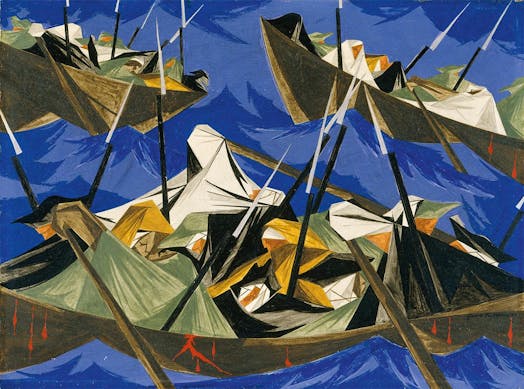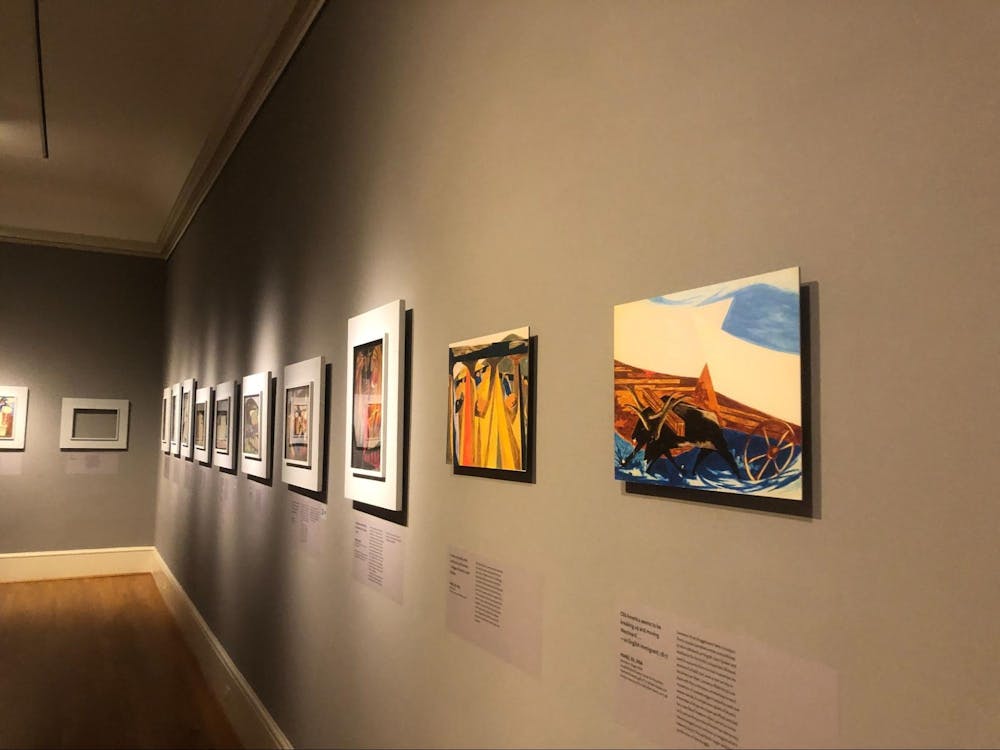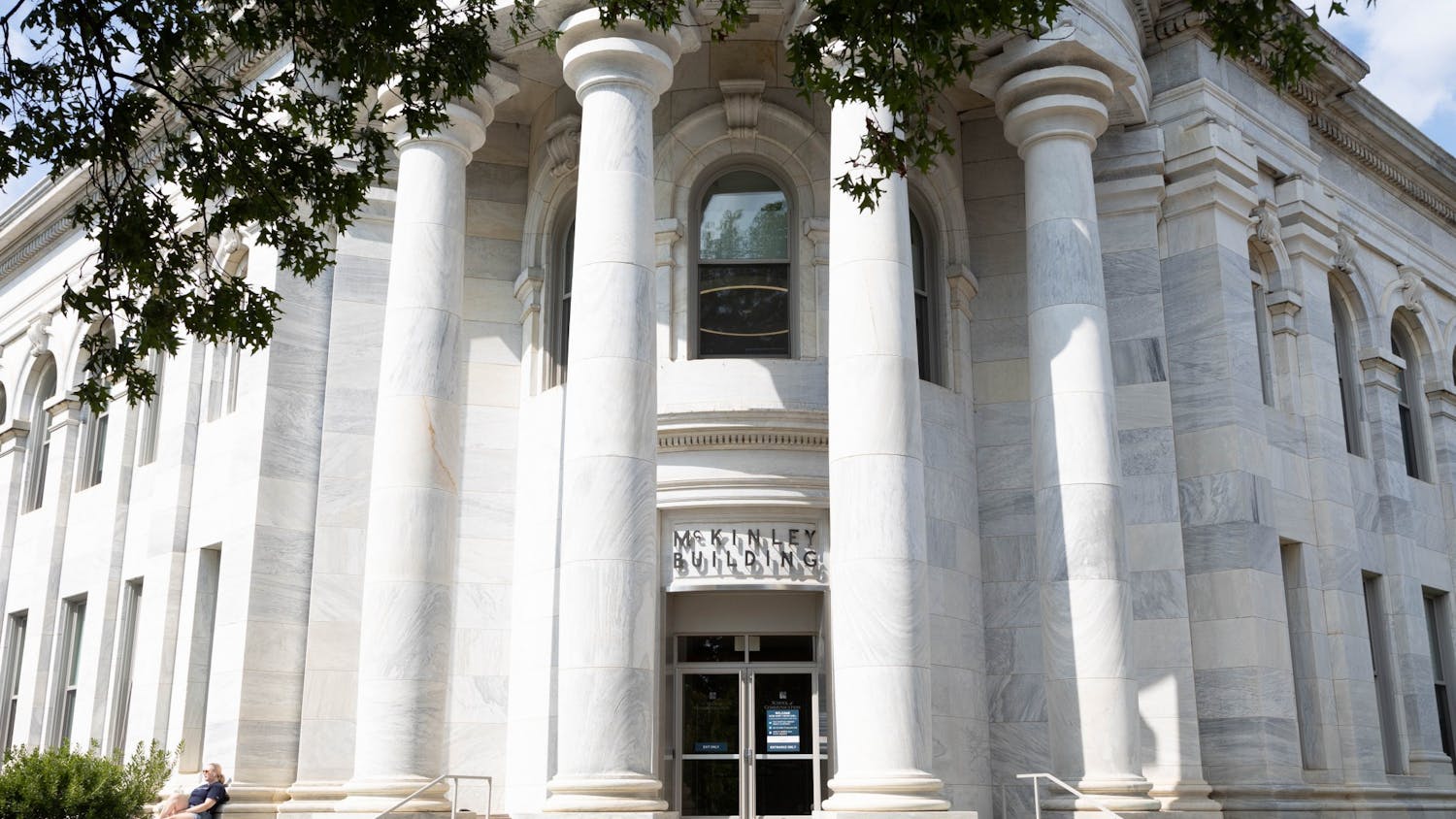In 1954 as Brown v. Board of Education was altering the fabric of our nation, artist Jacob Lawrence began work on a new project; he too was refashioning American stories to account for a diverse America.
His endeavor provided the foundation for an exhibit titled “The American Struggle” now on display at the Phillips Collection. Although the work was completed in the backdrop of the Civil Rights Movement, Lawrence utilizes storytelling to turn visitors into passive travelers of an America where time has collapsed yet struggle proves constant.
Most famously known for “The Migration Series,” Lawrence was an artist devoted to portraying the Black American experience. “The American Struggle” is aesthetically similar to his previous work due to his inclusion of figurative representation alongside abstract elements. Both “The Migration Series” and “The American Struggle” are a series of paintings that follow a linear historical progression.
According to the exhibit panel, “The American Struggle” is a product of Lawrence’s extended visits to the New York Public Library where he pored over historical documents. During these visits, Lawrence was particularly drawn to the mythology surrounding America’s founding fathers. “The American Struggle” places the words of the founding fathers alongside lesser-known historical figures. These words are strategic, not only as they reverberate in many of our minds from once having to so torturously memorize them in U.S. history classes, but because these words are used to naturalize the privilege of white Americans.
Lawrence’s fascination with pictorial storytelling challenges this conditioning by exposing the brutality implicit within how privilege is obtained and upheld. Within the exhibit, Lawrence utilizes counterstory to allow space for those whose lives don’t fit within the master narrative; whose experiences are often overlooked. The exhibit suggests that our country has always been in struggle, that in fact, violence is the most consistent through-line in our history. This is visualized as the bright red paint that drips ominously on each canvas; the red pops in each counternarrative he presents.

One counternarrative depicts a recasting of “Washington Crossing the Delaware,” Washington’s famous boat portrait. Instead of Washington’s bravado being put on display, people are seen shivering on the helm, with the uncertainty of fate upon arrival. On another, a woman arms herself with her husband’s gun after he suffers an injury, highlighting the often-overlooked contributions of women to the war effort. These illustrations foster a confrontation between the idealized life the quotes on each panel elicits and people’s actual lived experiences.
Accompanying Lawrence’s series of panels is work by more contemporary artists who draw upon similar themes, using new multi-sensory techniques. The work of Derrick Adams, Hank Willis Thomas and Bethany Collins engages the senses as you walk from room to room and experience the vibrancy of video, sound and light.
Ultimately, the exhibit underscores how nothing held within archives is fixed, rather, the history we know today is a product of narrative communication over time and across U.S. cultures. We need more storytellers such as Lawrence and Thomas who seek to subvert the tired and outdated stock stories that have been accepted without question for too long.
The Phillips Collection is open Tuesday-Sunday, 11 a.m. to 6 p.m. and is free to students. Reserve your timed tickets here. For a virtual experience of the exhibit click here.





